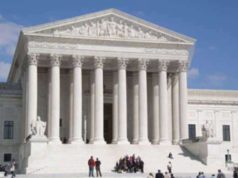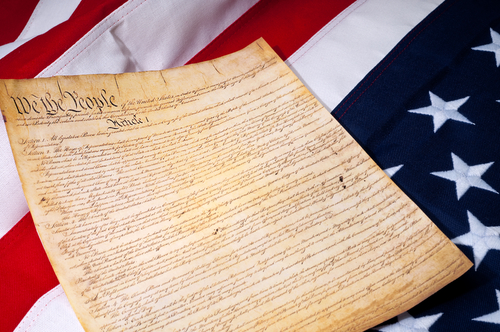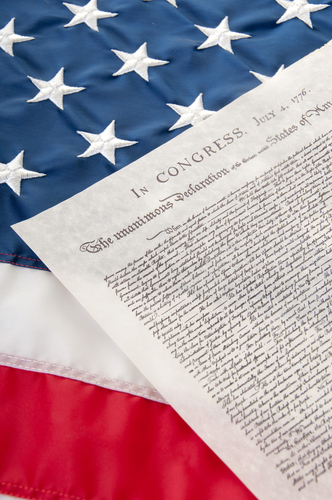Table of Contents

20th Amendment Overview
The 20th Amendment to the United States Constitution is an important amendment that was ratified in 1933. Known commonly as the “Lame Duck Amendment,” it changes the dates of the presidential and congressional inaugurations, moving both to January 20th. Additionally, it clarifies the process of presidential succession, enabling the Vice President to take over if the President dies or becomes incapacitated. The 20th Amendment has had significant effects on the United States, shaping the way that government functions and influencing the course of American history.
The origins of the 20th Amendment can be traced back to the earliest years of the United States. The original Constitution, signed in 1787, established January 4th as the date for Congress to convene and March 4th as the date for the presidential inauguration. This system, known as the “lame duck” period, created a long period of inactivity during which outgoing officials had little incentive to carry out their duties. Additionally, in cases of a presidential election, when the outgoing and incoming presidents were from different parties, the lame duck period created an environment of instability and uncertainty.
The first efforts to address this issue came in the early 19th century with the passage of the 20th’s predecessor, the 12th Amendment. This amendment changed the presidential election process, requiring the electors to cast separate ballots for President and Vice President and preventing ties between them. However, it did not address the issue of the lame duck period. Over time, as the country grew and changed, the problems posed by this period became more apparent.
The 20th Amendment was introduced in Congress in 1923, and it took ten years to be ratified by the required number of states. During this period, public demand for an end to the lame duck period grew, and several notable events, such as the stock market crash of 1929 and the Great Depression, added urgency to the amendment’s passage. In 1932, the amendment was passed by Congress and sent to the states for ratification. As states began to approve it, the lame duck period became a thing of the past.
Perhaps the most significant effect of the 20th Amendment has been the elimination of the lame duck period. By moving the presidential inauguration to January 20th, the amendment ensures that incoming officials can hit the ground running, without the distractions and uncertainties that plagued previous transitions. This change has had a particularly notable impact on the functioning of government during periods of crisis. In the 1930s, the amendment allowed Franklin D. Roosevelt to move aggressively to address the Great Depression immediately upon taking office. Similarly, in 2001, after the terrorist attacks of September 11th, the amendment enabled President George W. Bush to take swift action to respond to the crisis.
The 20th Amendment has also had a significant impact on the process of presidential succession. Prior to the amendment’s passage, the rules for presidential succession were not clearly defined. The 20th Amendment clarified this process, ensuring that the Vice President is able to take over if the President dies or becomes incapacitated. This provision has been particularly significant in times of national crisis. For example, when President John F. Kennedy was assassinated in 1963, Vice President Lyndon B. Johnson was able to take over immediately, ensuring continuity of government at a critical moment.
Another effect of the 20th Amendment has been to streamline the election process. By aligning the congressional inauguration with the presidential inauguration, the amendment ensures that there is no longer a long gap between the two events, as there was previously. This change has made the process of governing more efficient and effective, ensuring that newly-elected officials can get to work immediately.
Finally, the 20th Amendment has had a significant impact on the course of American history. By eliminating the lame duck period and clarifying the process of presidential succession, it has helped to stabilize the government during times of crisis and ensure continuity of government. This, in turn, has allowed American leaders to respond more effectively to national emergencies, from economic crises to terrorist attacks. It is difficult to overstate the importance of the 20th Amendment in shaping the way that government functions in the United States.
In conclusion, the 20th Amendment to the United States Constitution is an important amendment that has had a significant impact on the country. By eliminating the lame duck period, clarifying the process of presidential succession, and streamlining the election process, it has helped to stabilize the government and ensure continuity of government during times of crisis. Its effects can be seen in the way that government functions today, and it continues to shape the course of American history. Without a doubt, the 20th Amendment stands as one of the most important and influential changes to the Constitution in the nation’s history.
What is the 20th Amendment?
“Section 1. The terms of the President and Vice President shall end at noon on the 20th day of January, and the terms of Senators and Representatives at noon on the 3d day of January, of the years in which such terms would have ended if this article had not been ratified; and the terms of their successors shall then begin.
Section 2. The Congress shall assemble at least once in every year, and such meeting shall begin at noon on the 3d day of January unless they shall by law appoint a different day.
Section 3. If at the time fixed for the beginning of the term of the President, the President-elect shall have died, the Vice President-elect shall become President. If a President shall not have been chosen before the time fixed for the beginning of his term, or if the President-elect shall have failed to qualify, then the Vice President-elect shall act as President until a President shall have qualified; and the Congress may by law provide for the case wherein neither a President-elect nor a Vice President-elect shall have qualified, declaring who shall then act as President, or the manner in which one who is to act shall be selected, and such person shall act accordingly until a President or Vice President shall have qualified.
Section 4. The Congress may by law provide for the case of the death of any of the persons from whom the House of Representatives may choose a President whenever the right of choice shall have devolved upon them, and for the case of the death of any of the persons from whom the Senate may choose a Vice President whenever the right of choice shall have devolved upon them.
Section 5. Sections 1 and 2 shall take effect on the 15th day of October following the ratification of this article.
Section 6. This article shall be inoperative unless it shall have been ratified as an amendment to the Constitution by the legislatures of three-fourths of the several States within seven years from the date of its submission.”
The 20th Amendment Defined
Date Proposed
The 20th Amendment was proposed on March 2nd, 1932
Date Passed
The 20th Amendment was passed on January 23rd, 1933
President of the United States
Herbert Hoover was the President of the United States during the ratification of the 20th Amendment
Stipulations of the 20th Amendment
The 20th Amendment illustrates the statutes with regard to the terms of service undertaken by elected officials within the Federal Government – this includes the President, Vice President, and members of Congress
The text of the 20th Amendment mandates that Presidential – and Vice Presidential – term endings were moved from March to January 20th subsequent to the previous election
The text of the 20th Amendment mandates that Congressional terms – consisting of the House of Representative, as well as the Senate – were adjusted to end on January 3rd at noon
Congress is required to meet – at least one time – on an annual basis; this meeting time is expressed as sharing the same day as the ending of Congressional terms
In the event of the death of the President of the United States, the Vice President will assume the position of presidency; Presidential-elects who die in an untimely fashion – prior to the beginning of their expected term – may be replaced by the Vice President-elect
The Electoral College is granted priority with regard to the selection process of the replacement Presidential candidate
20th Amendment Facts
The 20th Amendment allows for Congress to appoint a replacement for a deceased presidential elect in the event that the Vice President-elect has not received approval or the Electoral college has proven to be unable to make a decision
The House of Representatives may be responsible for the appointment of the President – the Senate may be responsible for the appointment of the Vice President
States Ratifying the 20th Amendment
1. Alabama
2. Arizona
3. Arkansas
4. California
5. Colorado
6. Connecticut
7. Delaware
8. Florida
9. Georgia
10. Idaho
11. Illinois
12. Indiana
13. Iowa
14. Kansas
15. Kentucky
16. Louisiana
17. Maine
18. Maryland
19. Massachusetts
20. Michigan
21. Minnesota
22. Mississippi
23. Missouri
24. Montana
25. Nebraska
26. Nevada
27. New Hampshire
28. New Jersey
29. New Mexico
30. New York
31. North Carolina
32. North Dakota
33. Ohio
34. Oklahoma
35. Oregon
36. Pennsylvania
37. Rhode Island
38. South Carolina
39. South Dakota
40. Tennessee
41. Texas
42. Utah
43. Vermont
44. Virginia
45. Washington
46. West Virginia
47. Wisconsin
48. Wyoming
Statutes Associated with the 20th Amendment
Article 1, Section 4, Clause 2 of the Constitution initially addressed the applicable terms of Presidential candidates and Congressional members:
“The Congress shall assemble at least once in every Year, and such Meeting shall be on the first Monday in December unless they shall by Law appoint a different Day.”(Article 1, Section4, Clause 2)


























